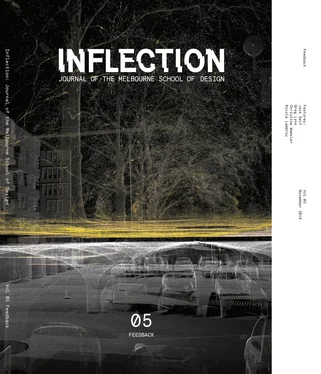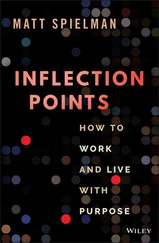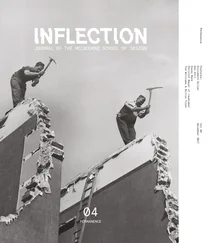Feedback generally refers to something exterior to the process of designing—the collection of data from clients or users. Not only does there lack a clear rubric for interpretation of this data, there’s no standard mandate to collect it. How do we weigh the reported experience of one constituency over another, and how do we confirm the conclusions others make? Who decides what data gets collected and how it gets used? This essay proposes a new model for understanding communication and collaboration in the design process following Keller Easterling’s observation: “Architects typically love manners, utopias and crises. We love to make difficult questions harder. We love to train [ourselves] to do labourintensive tasks,” and so “a better role for the architect is not that of an optimizer but that of a comedian.” 2 The architect’s comedy is increasingly conversational, especially as worksharing software like Autodesk Revit imposes a continual call-and-response within the office in its insatiable saving-to-central. Easterling’s “architect-as-comedian” operates just at the threshold of futility, dispensing with traditional “hierarchical, ‘atelier’ culture,” in favour of direct engagement with “larger cultural organizations that actually direct most of the space-making.” 3 Improvisation has been present in one form or another within architecture since the middle of the last century; this essay considers a structured subset of improvisational comedy, what might be known as “Chicago-style improv,” for rigorous insight into intentional collaboration, and posit a way in which feedback can thrive within structure.
Though the basic tenets of improvisation—spontaneity, use of material at hand—remain relatively consistent, its implications and the way improvised works are received vary widely across creative fields and through time. Where the improvisation of abstract impressionist painters like Jackson Pollock might be said to access deep subconscious knowledge (an individualistic perspective) an alternate approach that became popular in the 1960s regarded improvisation instead as a kind of extreme form of collaboration. According to American Studies professor Daniel Belgrad, “this model privileged ensemble work, typically in performing arts like music and dance. In this kind of work, the artists’ creative ideas were understood to emerge not ‘from the depths’ of the unconscious mind, but from the group dynamic.” 4 This emphasized group improvisation as a way to create new works rather than considering improvisation as akin to a revelatory psychoanalysis for an individual to explore.
Architecture has flirted with improvisation before. In architect Cedric Price’s Fun Palace project (1964), users were invited to manipulate their environments and create hyper-customized and specific forms that suited their needs. The Fun Palace was, as architectural historian/theorist Stanley Mathews points out, “not really a building at all but a vast, socially interactive machine, an improvisational architecture, constantly changing in a ceaseless cycle of assembly and dismantling.” 5 In Price’s project, the users were the improvisers, not the architect. He would provide a base set of materials or possibilities, but users were tasked with transforming them to make spaces work. Mathews contends that this version of improvisation tracks the social politics of the 1960s, a shift from a Modernist worldview of “unchanging ideality, abstract space and purity, to a Heraclitean view of a world in constant flux.” 6 The architect might have some broad ideas about how to support growth or change, but the Fun Palace contends that only users know what suits their needs. Improvisation here means interactive, flexible, easily adjustable. If indeed the “programmatic fluidity and formal indeterminacy of the Fun Palace is an architectural analogue to the transformations experienced throughout postwar British society,” per Mathews, then perhaps there’s another version of consciously improvisational design similarly suited to our time. 7
Cedric Price, Fun palace, 1964. Model. Image courtesy of Cedric Price fonds, Canadian Centre for Architecture.
IDEO’s Brainstorming Rules are printed on small cards for easy reference. Image reproduced with permission from Devin Peek/IDEO, courtesy of the author.
The British feminist design collective Matrix, begun in the late 1970s, was also interested in the role of the user in developing program and making design decisions. But unlike the post-facto improvisation of the Fun Palace, Matrix sought to incorporate users into the design process from the start of a project’s conception. They reconceived the visioning stage of a project as a collaboration with clients and end users, and made attempts to mirror the kind of non-hierarchical structures they aimed for their own practice, eschewing titles and forming the company as a worker-owned cooperative. Matrix’s feminism led the group to advocate for changes to sexist design standards that didn’t take into account all users’ contingencies—they pointed to things like the difficulty of navigating public spaces with children in tow, or the fact that, for many households, the male partner had primary access to the family car, as evidences of biases embedded in designed spaces. As a result, according to Janie Grote, they “started from the premise that the building belonged to the client/users and not to the architect.” 8
Where Cedric Price aimed to design a framework within which unknown future users could freely experiment, the Matrix collective sought to know their users directly and to actively involve them in decision making. In order to do so, “it was recognized that strategies needed to be developed to enable the client group to be involved in and have control over the design. By such a joint approach, it was anticipated that, no matter how small the project, it would be possible to produce a building whose quality satisfies its users.” 9 Matrix’s approach was improvisational in the sense that it required the creation of a new work process to combat embedded power structures. They identified a gendered dynamic in the provision of design services and developed what they called a “consultative” approach: “one that aims at re-shaping power relationships between the ‘expert’ and the ‘layperson’, necessarily allows women as clients to be involved at every stage of the design process and devises the means to do so.” 10 Importantly, this process also involved evaluating the conventional tools of architectural representation—models and drawings—for their latent projections of authority, and producing something more malleable, more open to conversation and change.
The Law Firm improv group performs at the Upright Citizens Brigade Theater. Arin Sang-urai, 2016. New York City.
For the Jagonari Education Resource Centre project, that meant producing models for the client team “to dismantle and re-assemble to assist in agreeing on the final plans,” and in general seems to have meant eschewing the glossy look of ‘final’ renderings and drawings in favour of representations that appear more modest and easily adjusted. 11
More recently an appetite for creative business practices has made popular a set of principles loosely titled ‘Design Thinking’, which extends beyond architecture and even design into many collaborative processes. In contrast to the Cedric Price or Matrix models, Design Thinking focusses primarily on the idea-generation portion of a project, no matter what the final product might be, with the insight that a successful design process is not linear but associative and unpredictable. Easily recognizable for its allegiance to Post-It Notes and popularity in the technology companies of Silicon Valley, Design Thinking promotes openness and non-judgemental encouragement among team members. Importantly, rather than the amorphous or difficult to test values of the earlier examples, IDEO, a design research firm and leading proponent of the process, has codified specific rules for brainstorming, which they distribute on small cards: “Defer Judgment, Encourage Wild Ideas, Build on the Ideas of Others, Stay Focused on Topic, One Conversation at a Time, Be Visual, Go for Quantity.” 12 The enthusiasm with which Design Thinking ideas have been adopted suggests that structured creative group processes are generative. While IDEO’s rules provide a framework for brainstorming, the complex phasing of architectural projects and the need to continuously collaborate throughout begs for additional parameters.
Читать дальше












